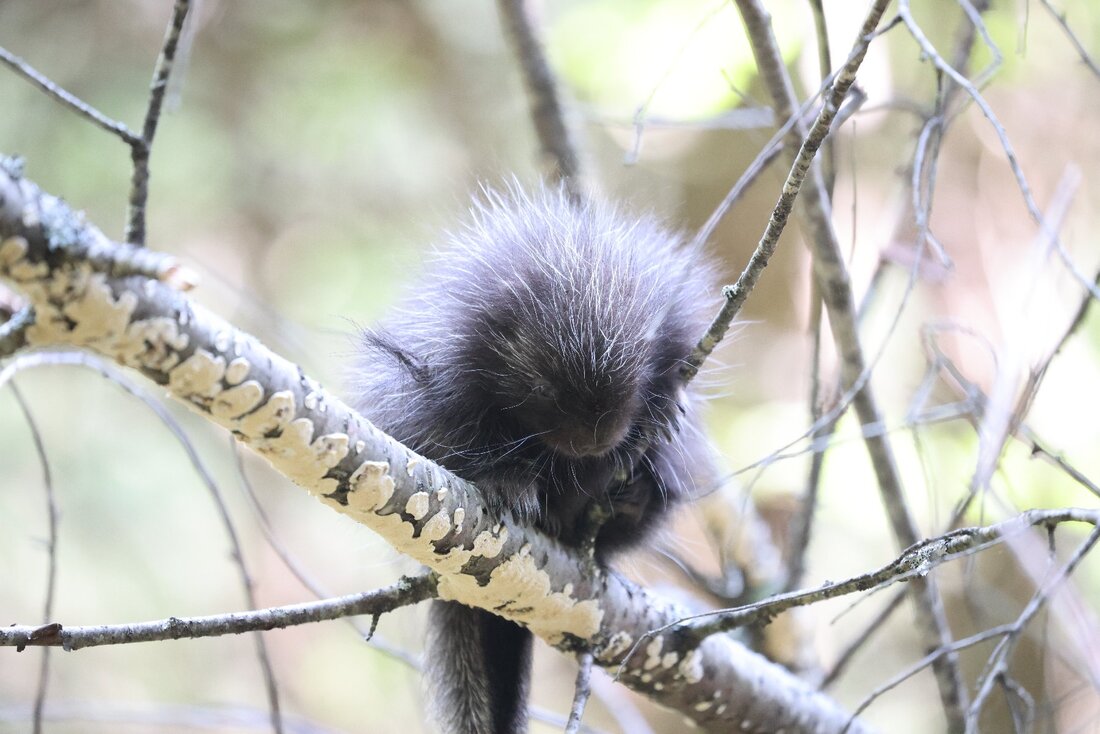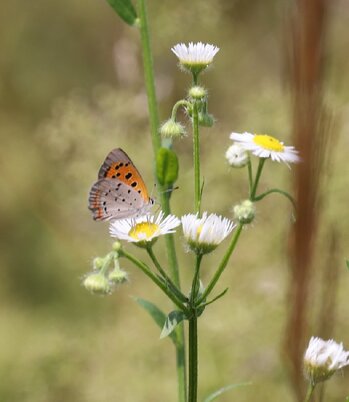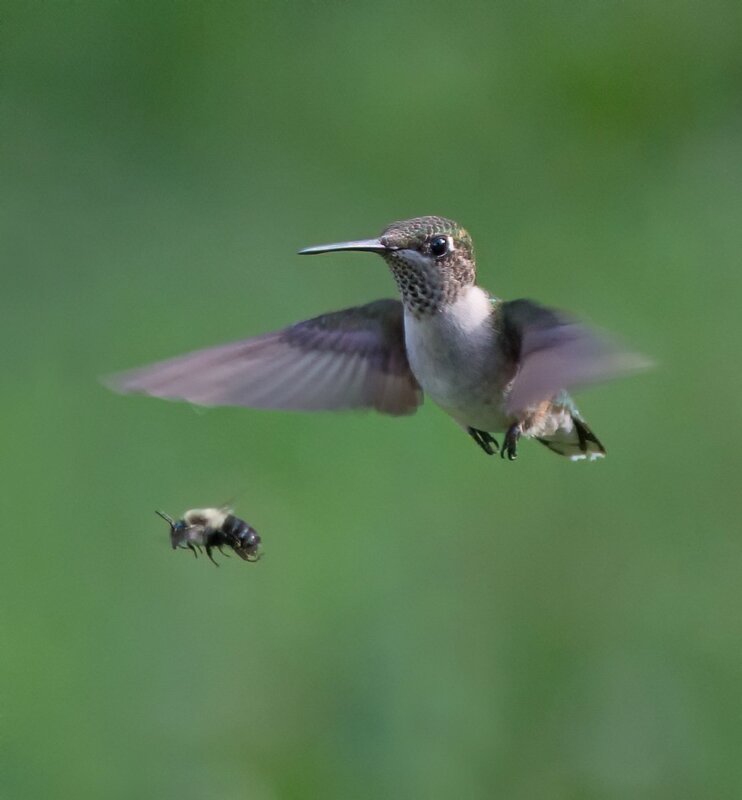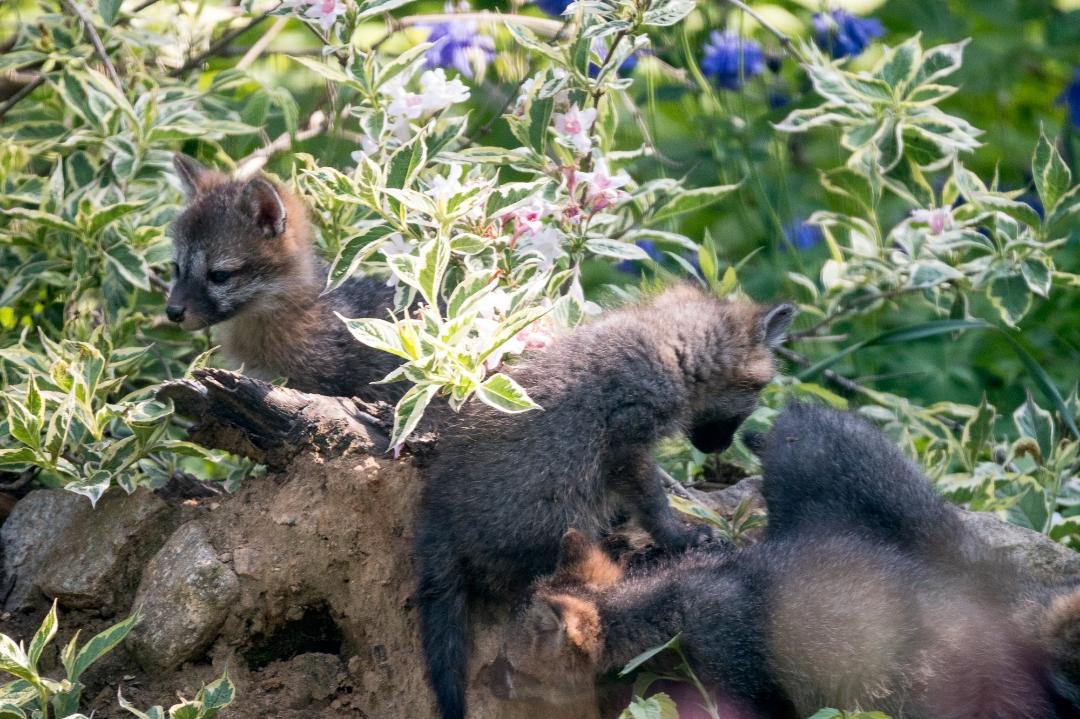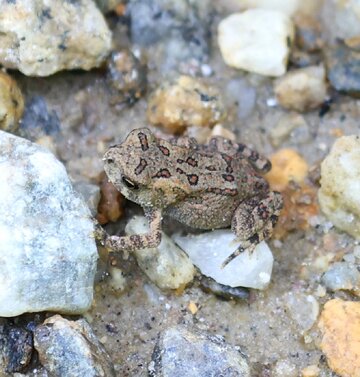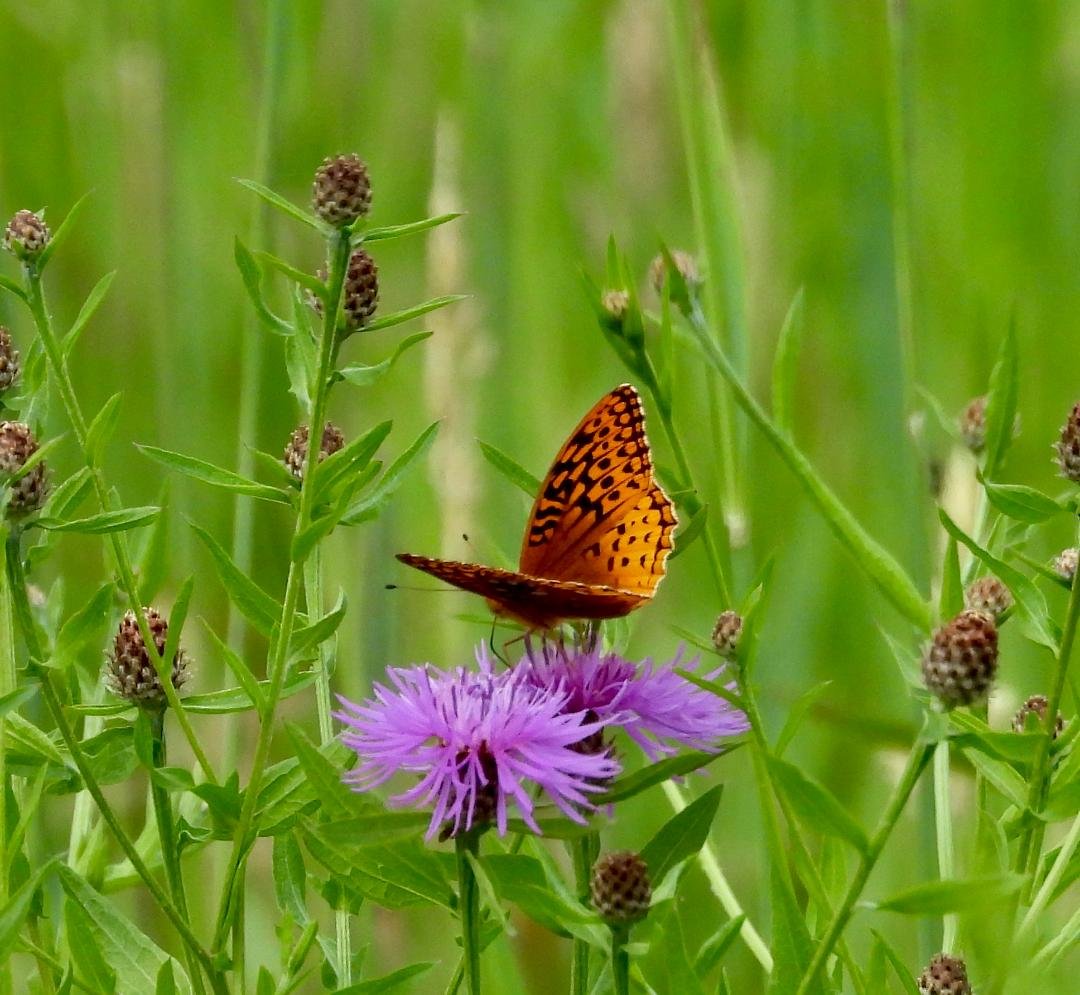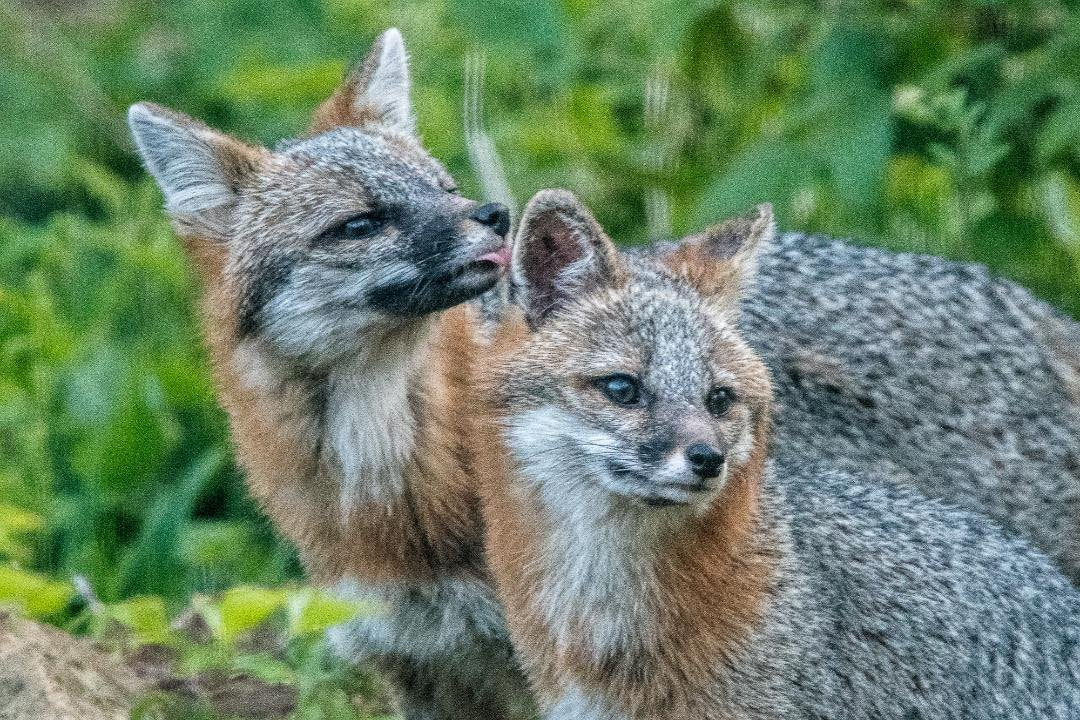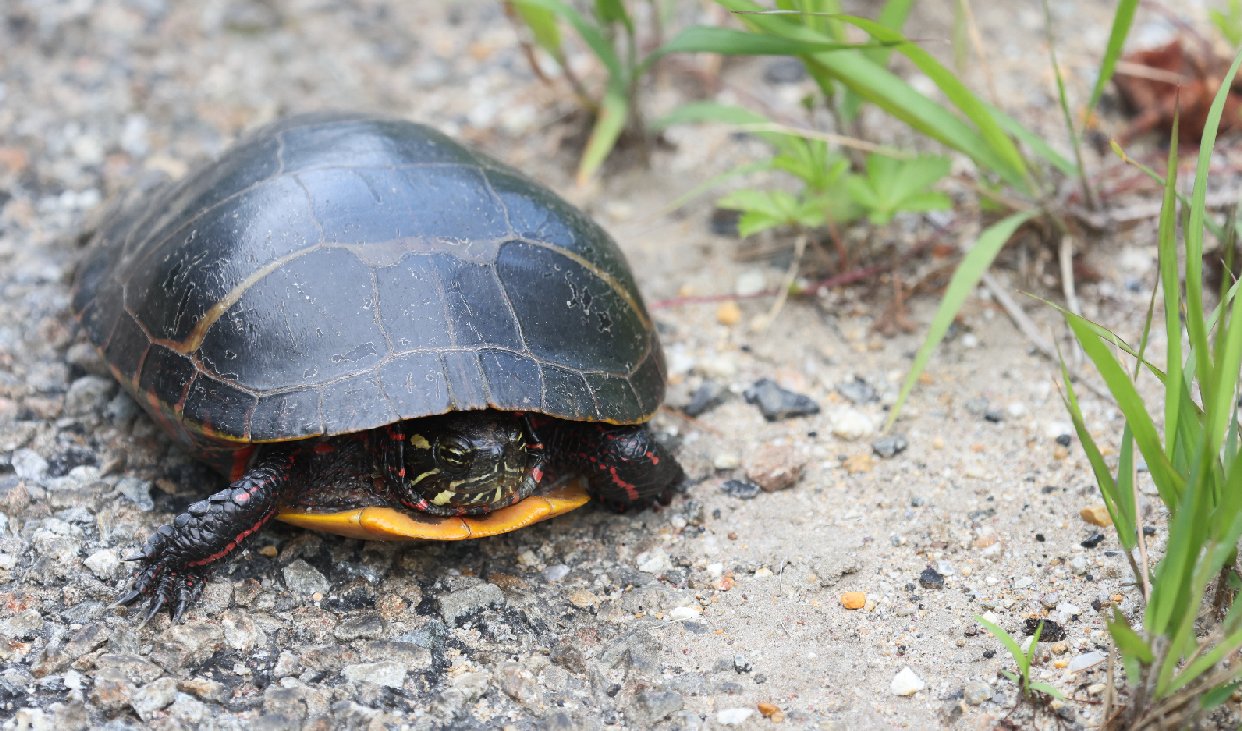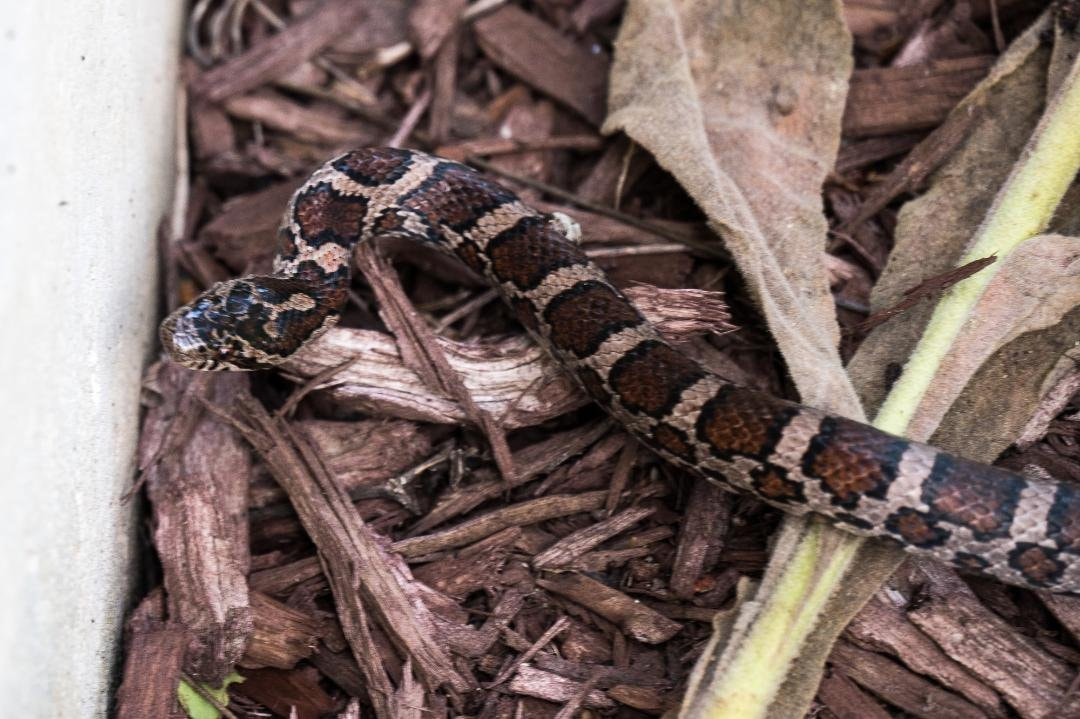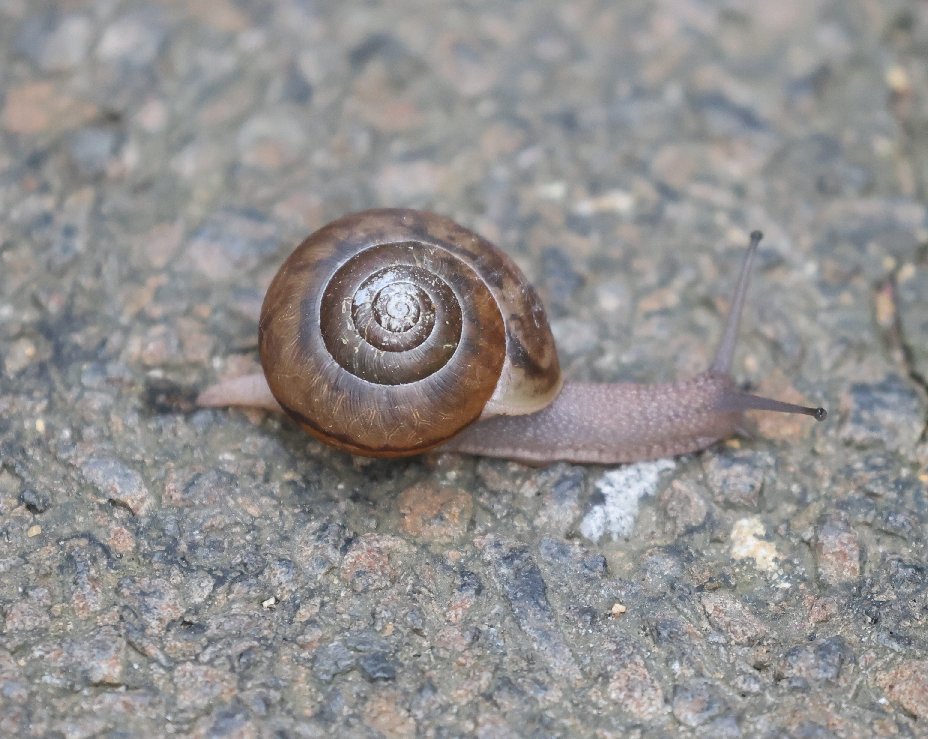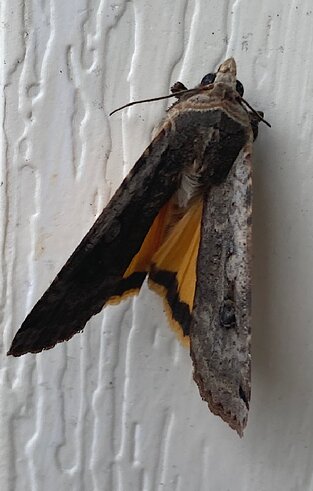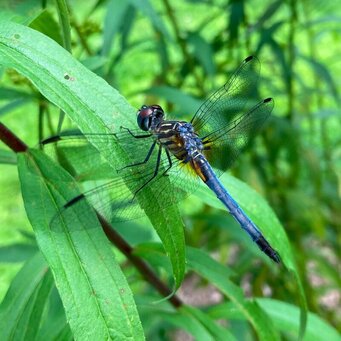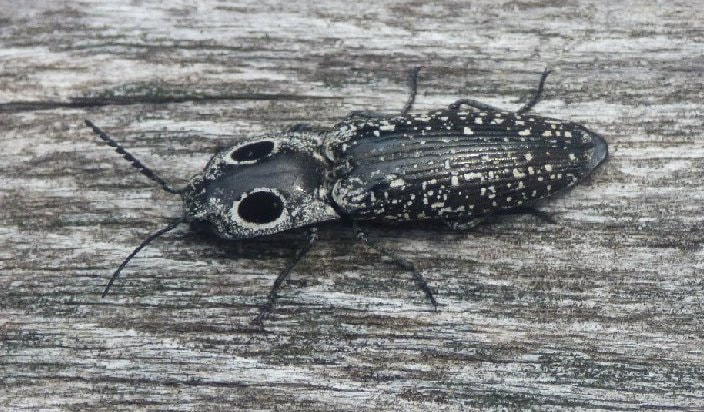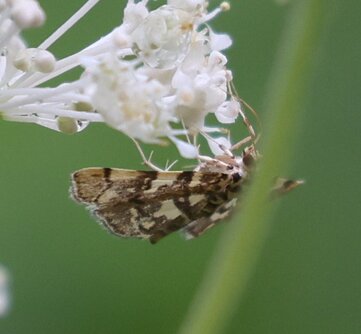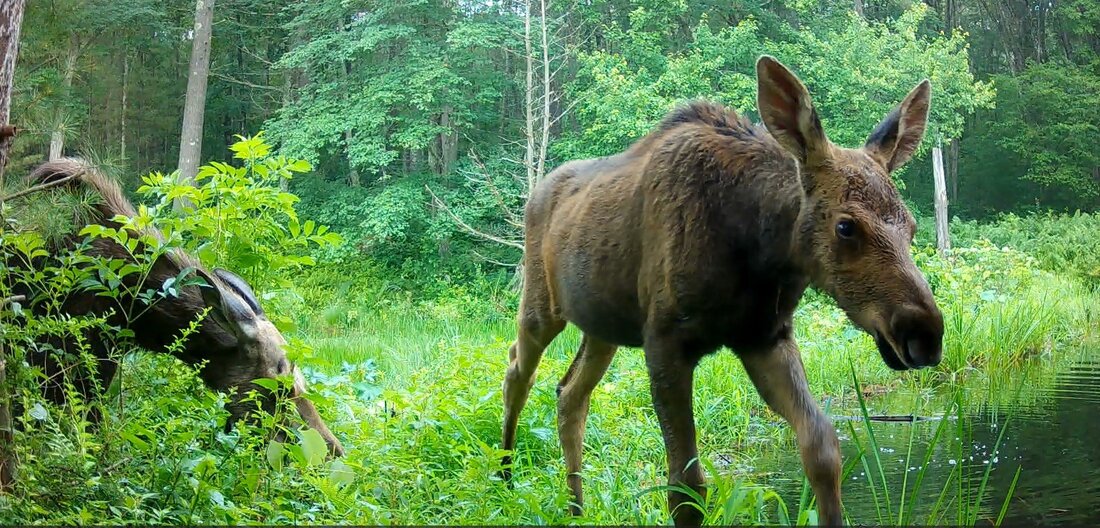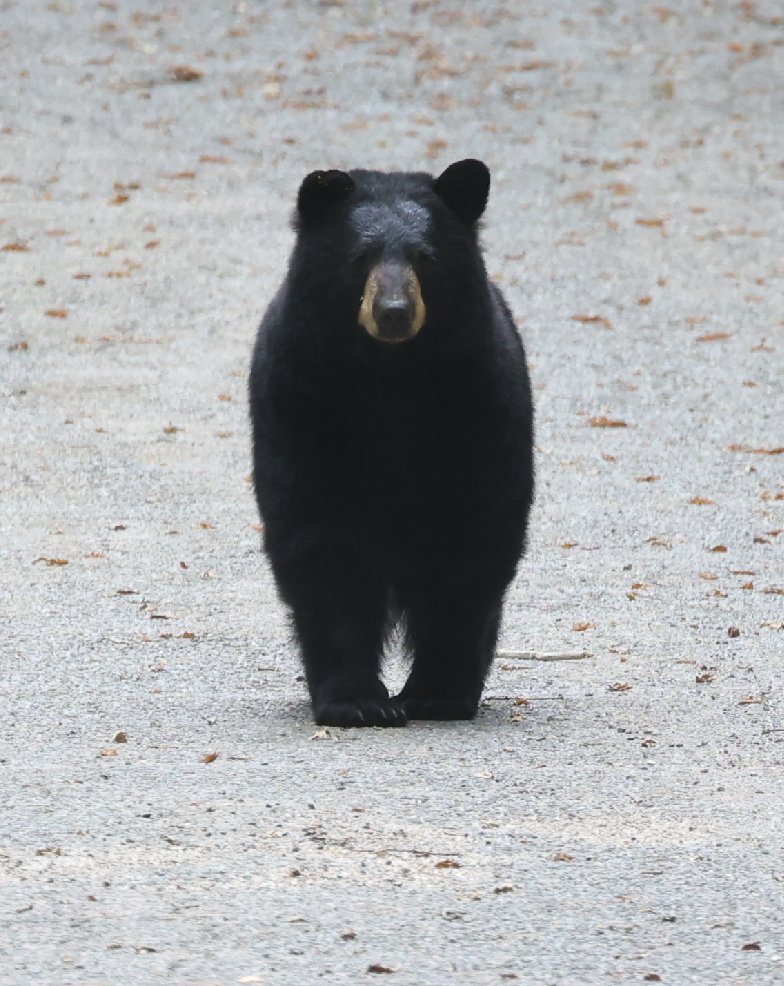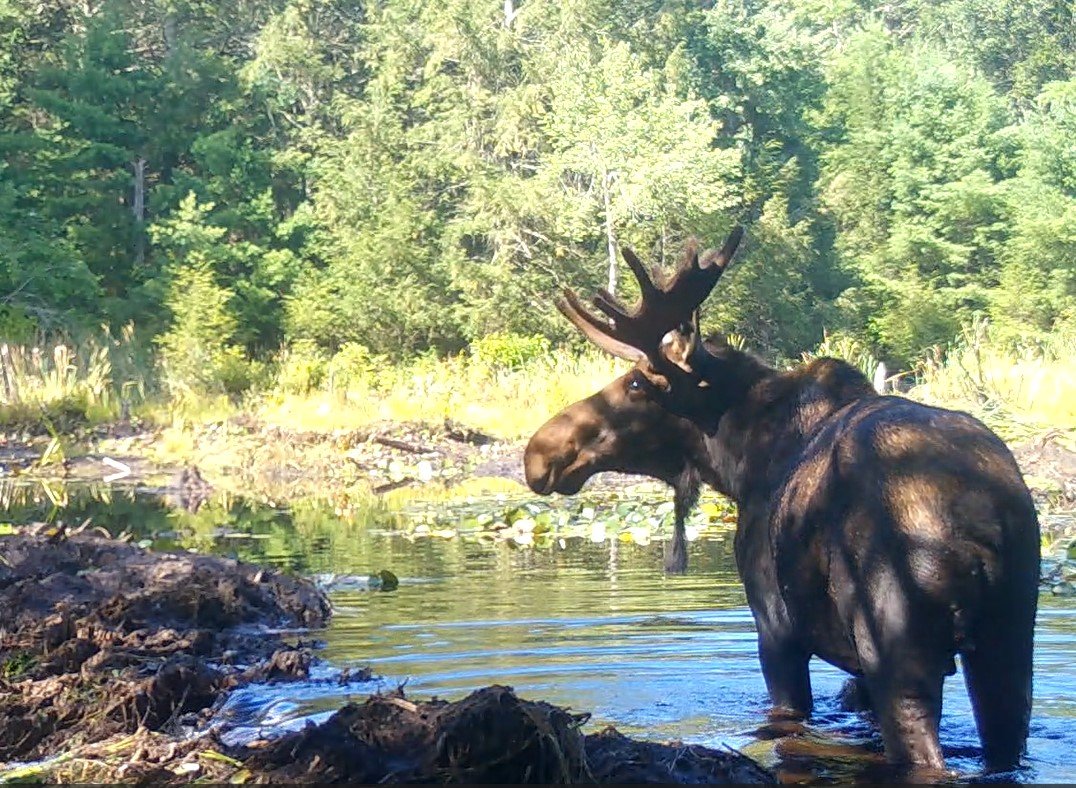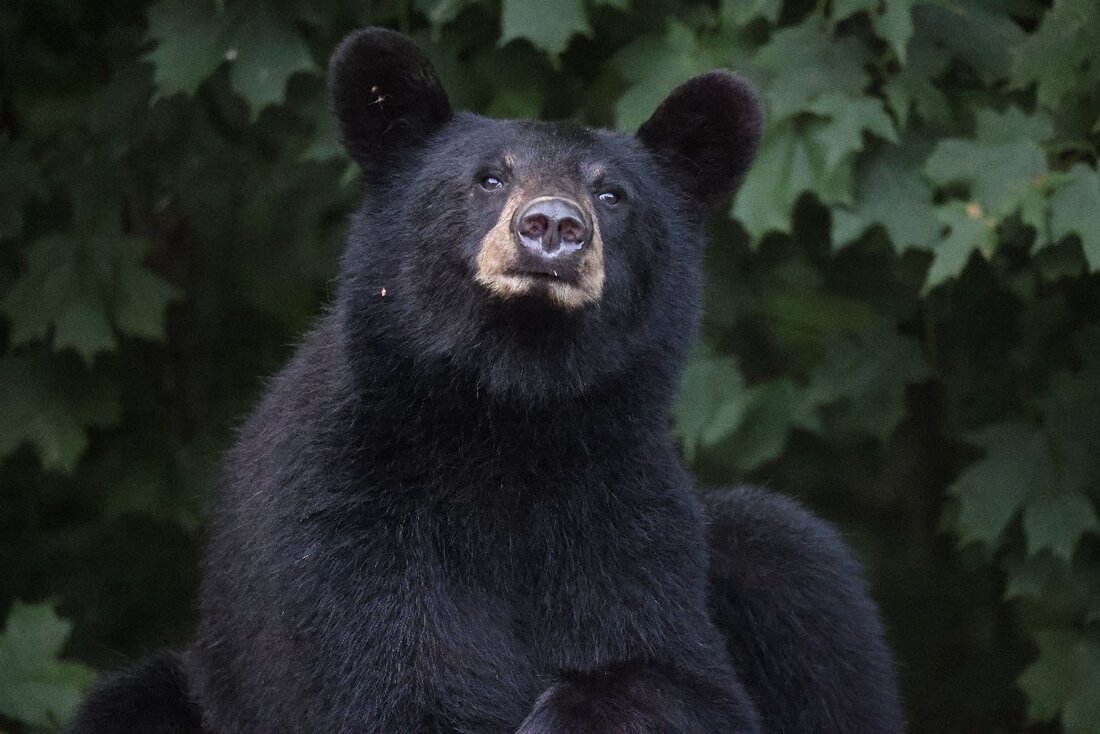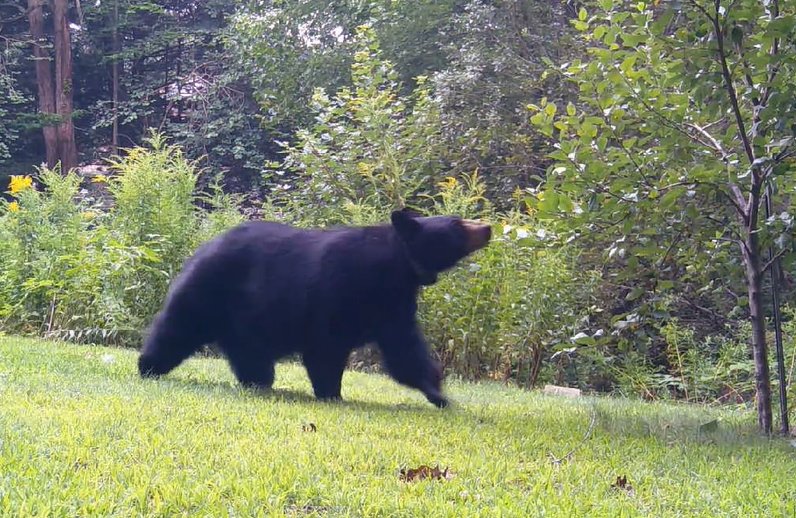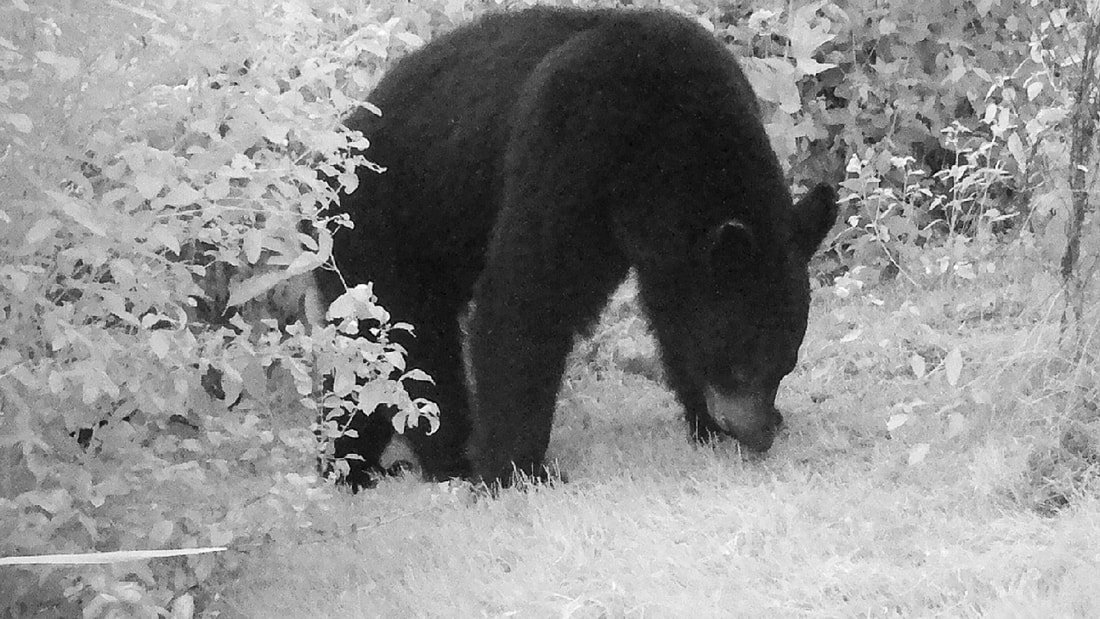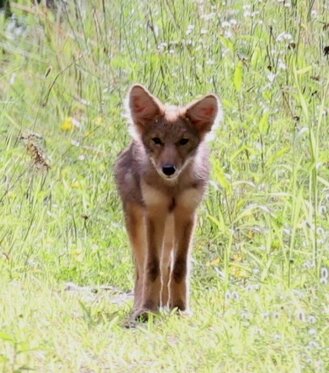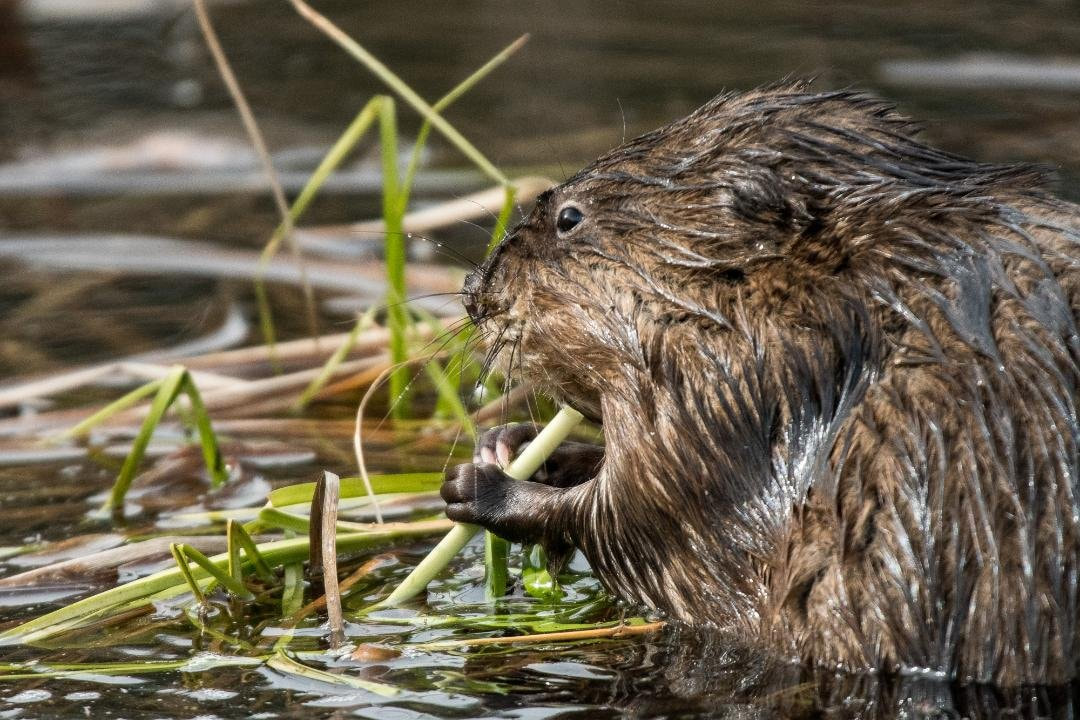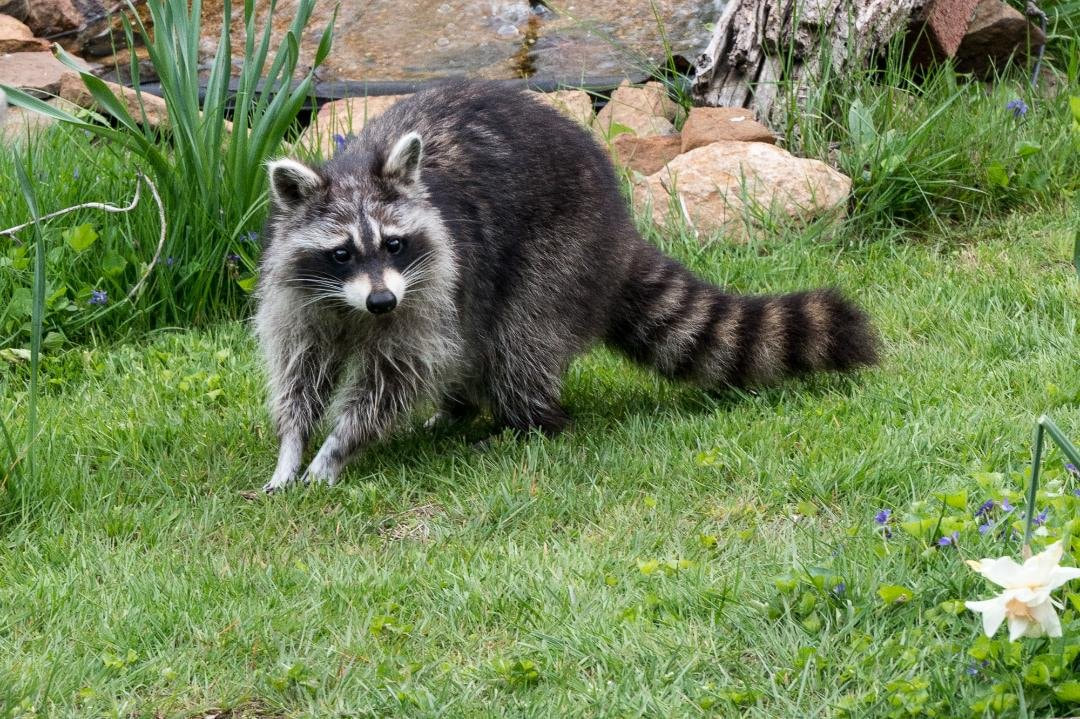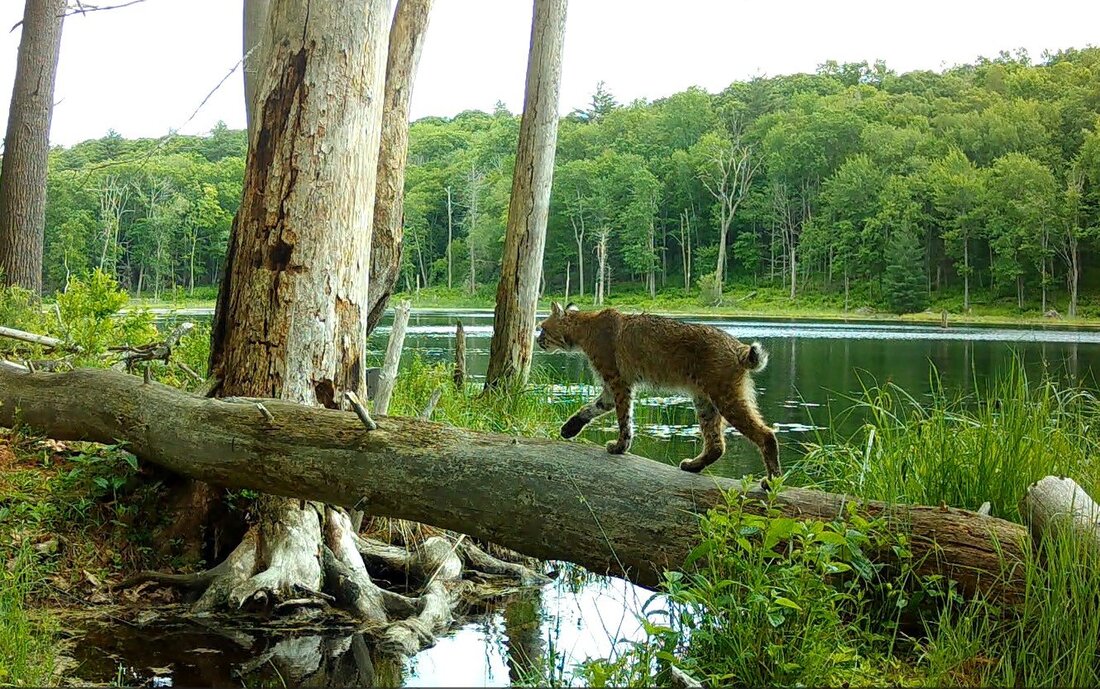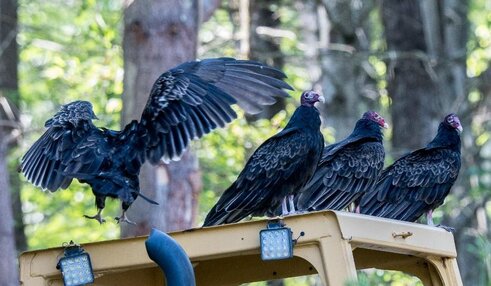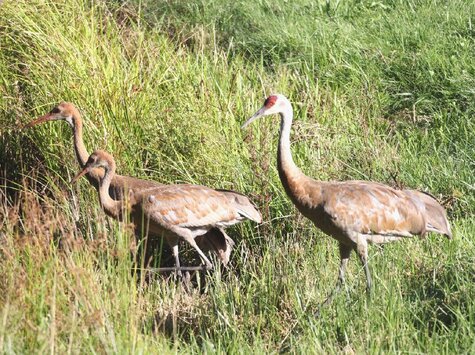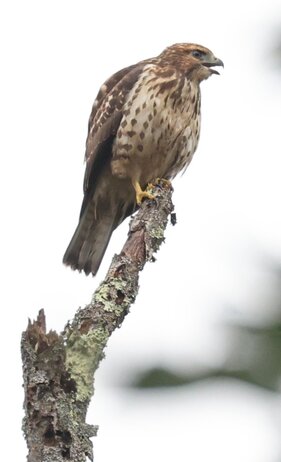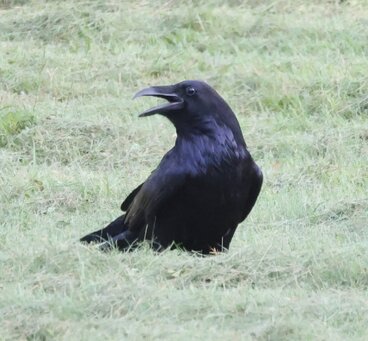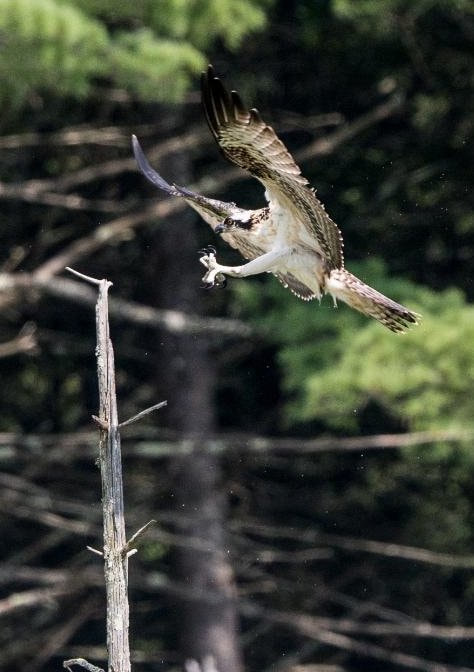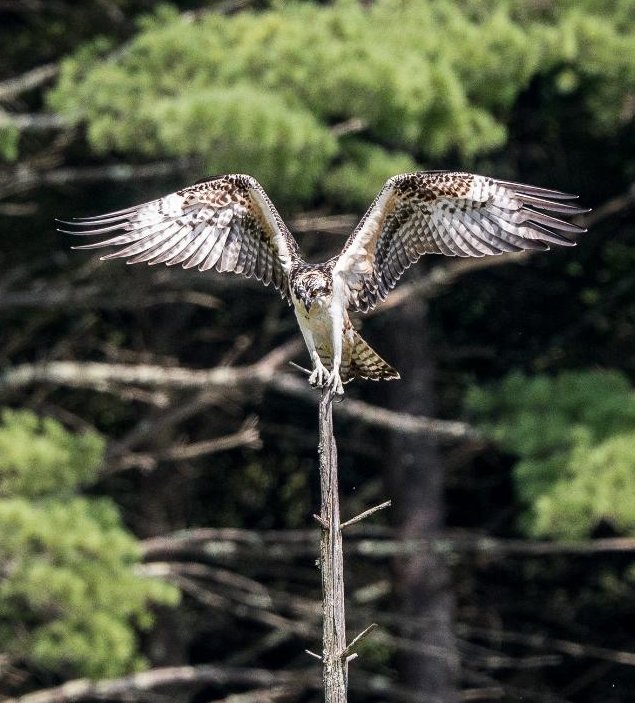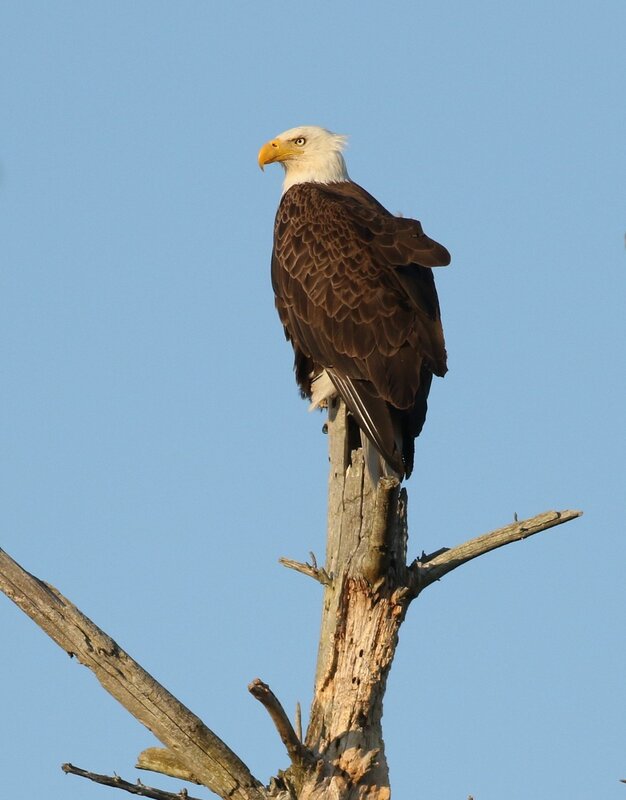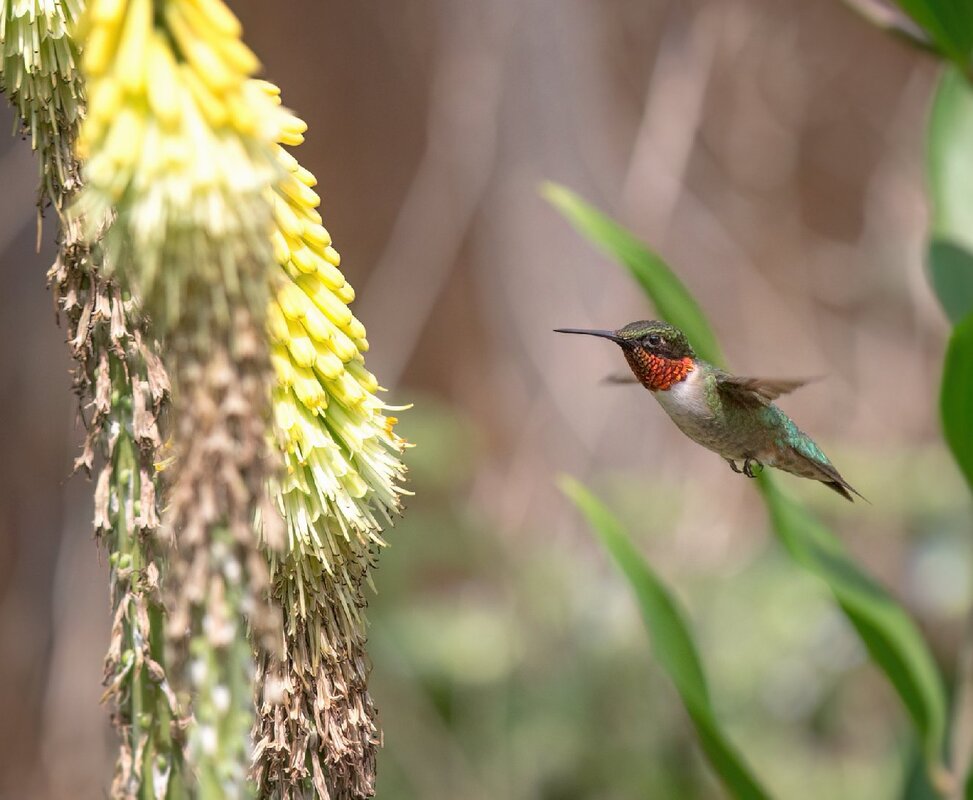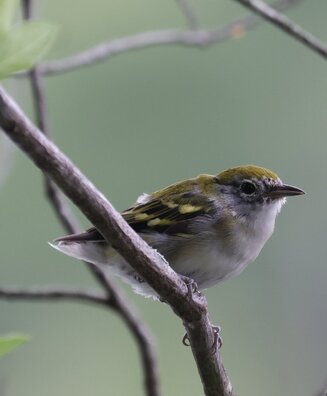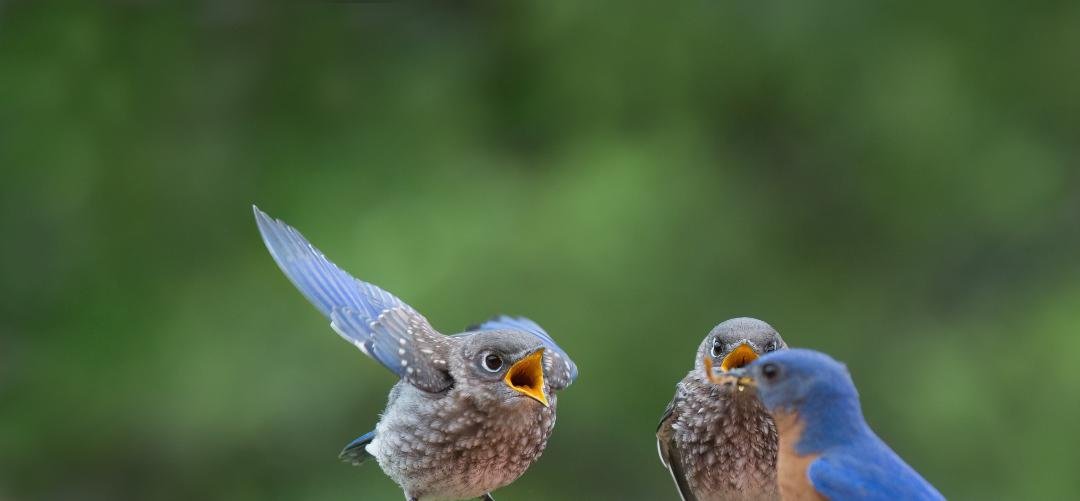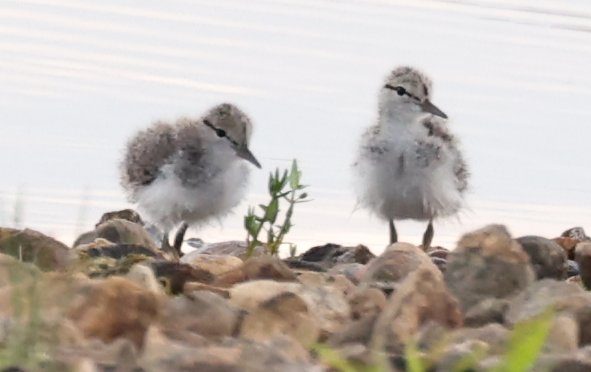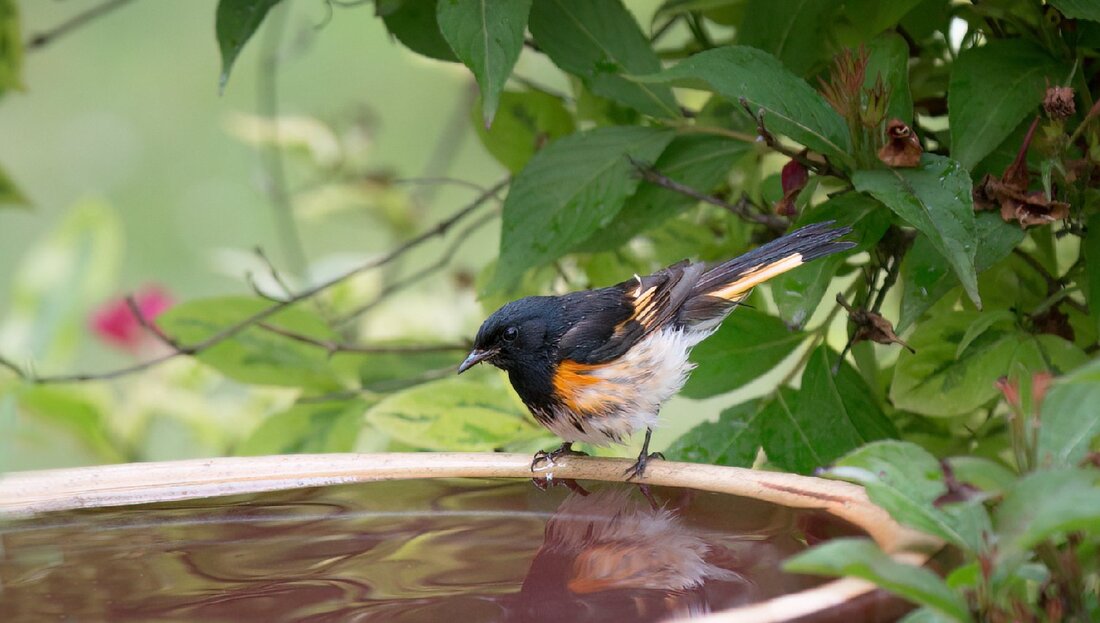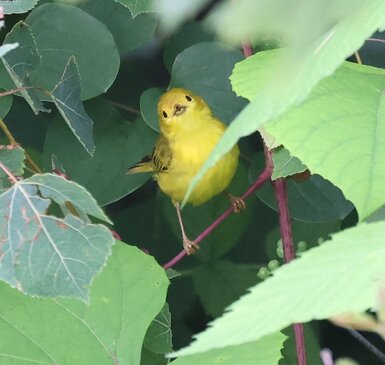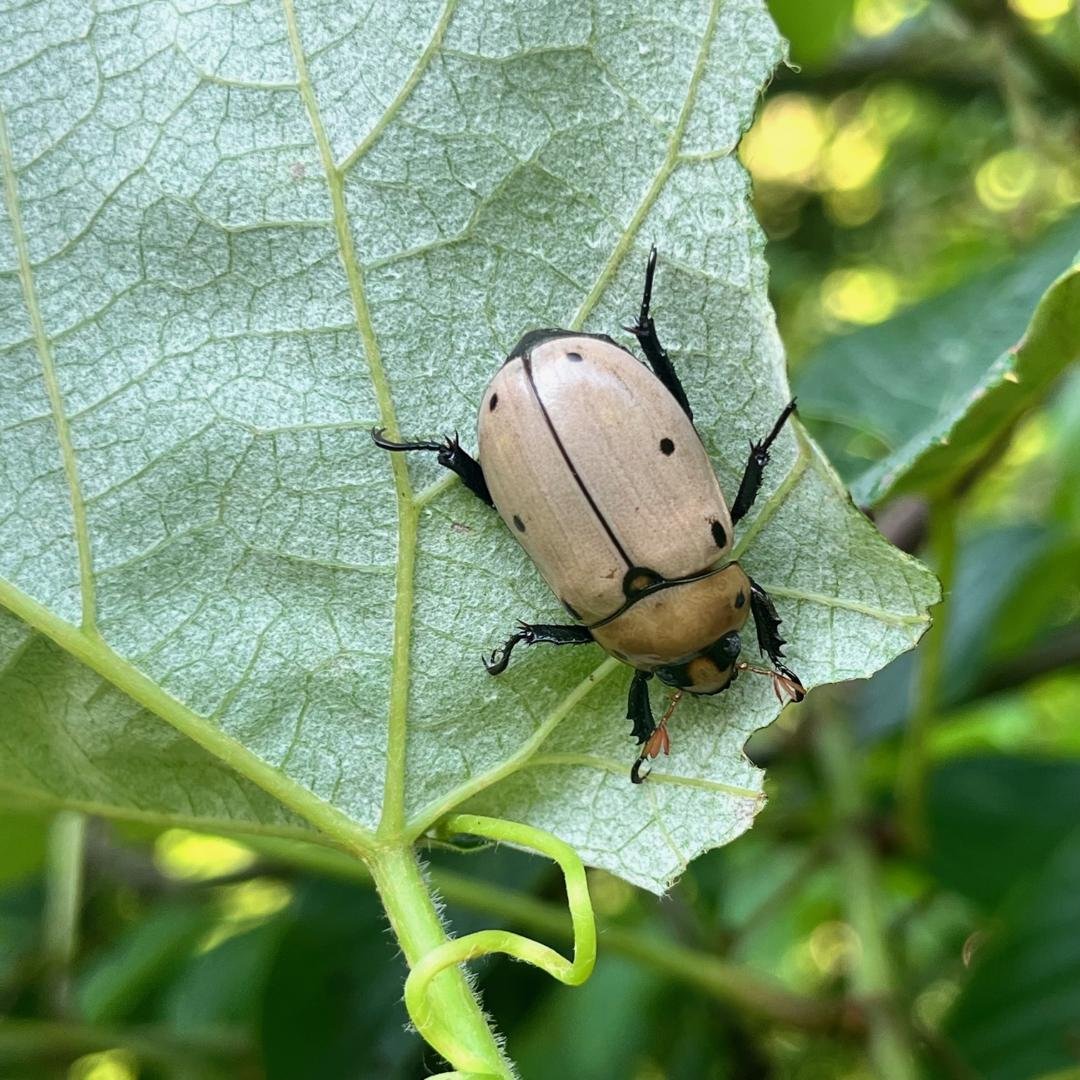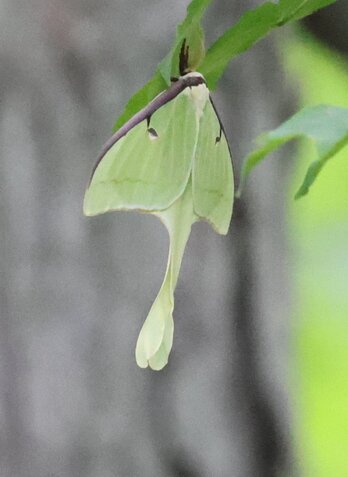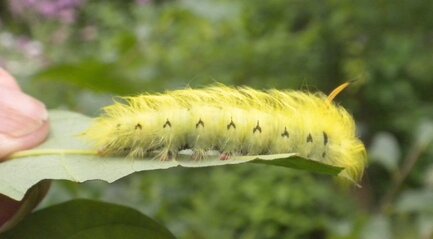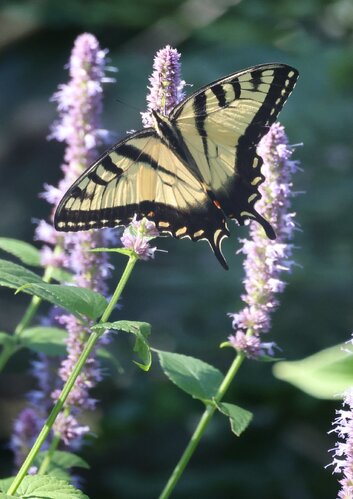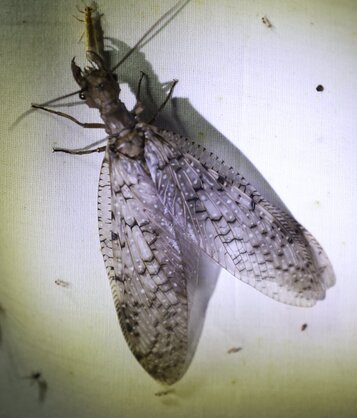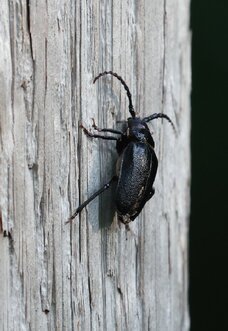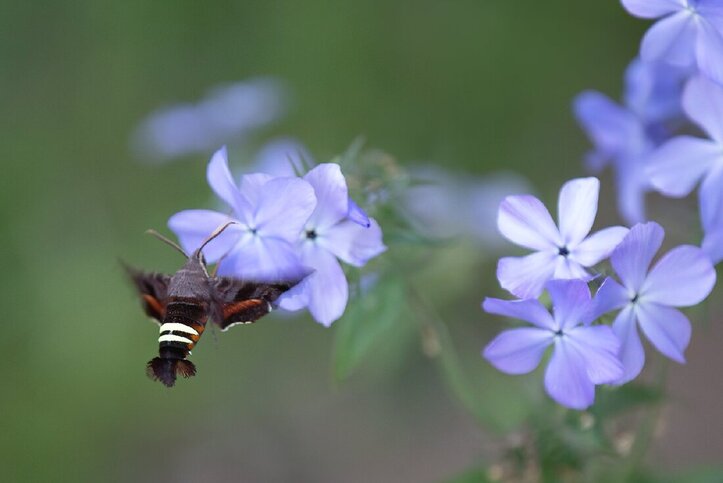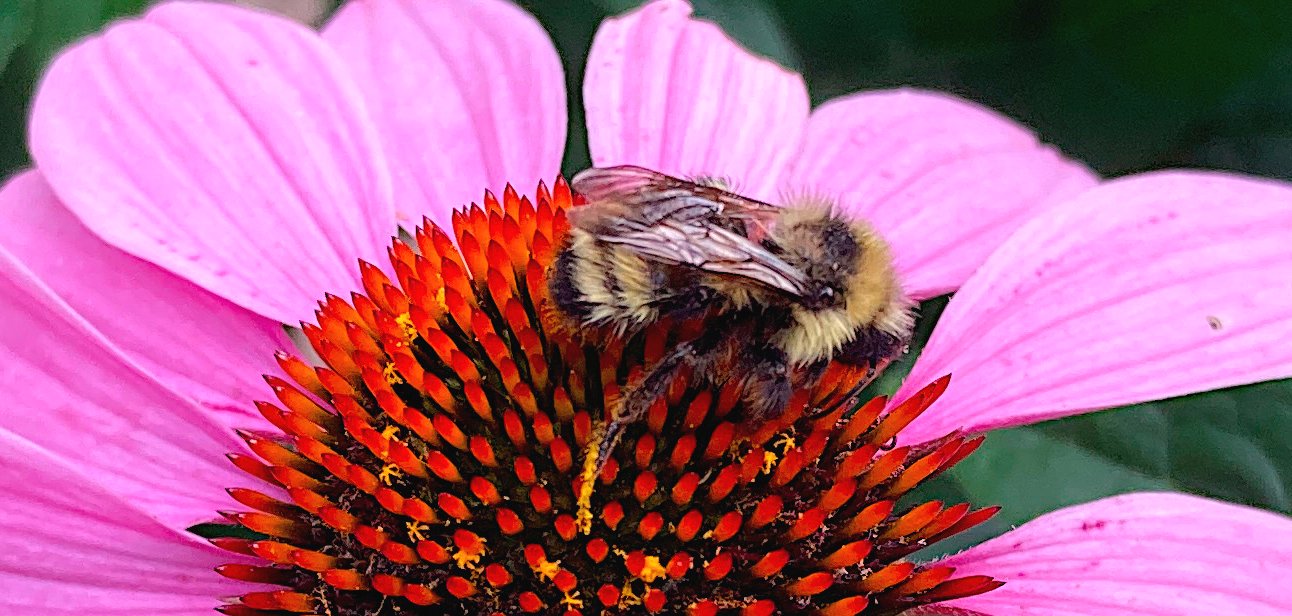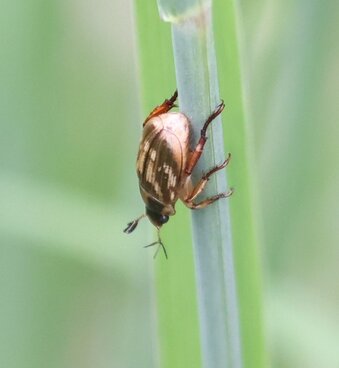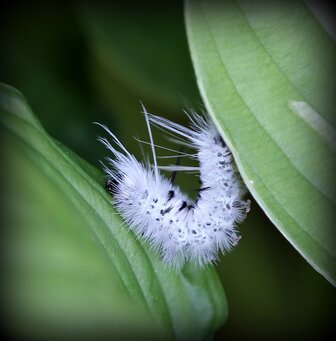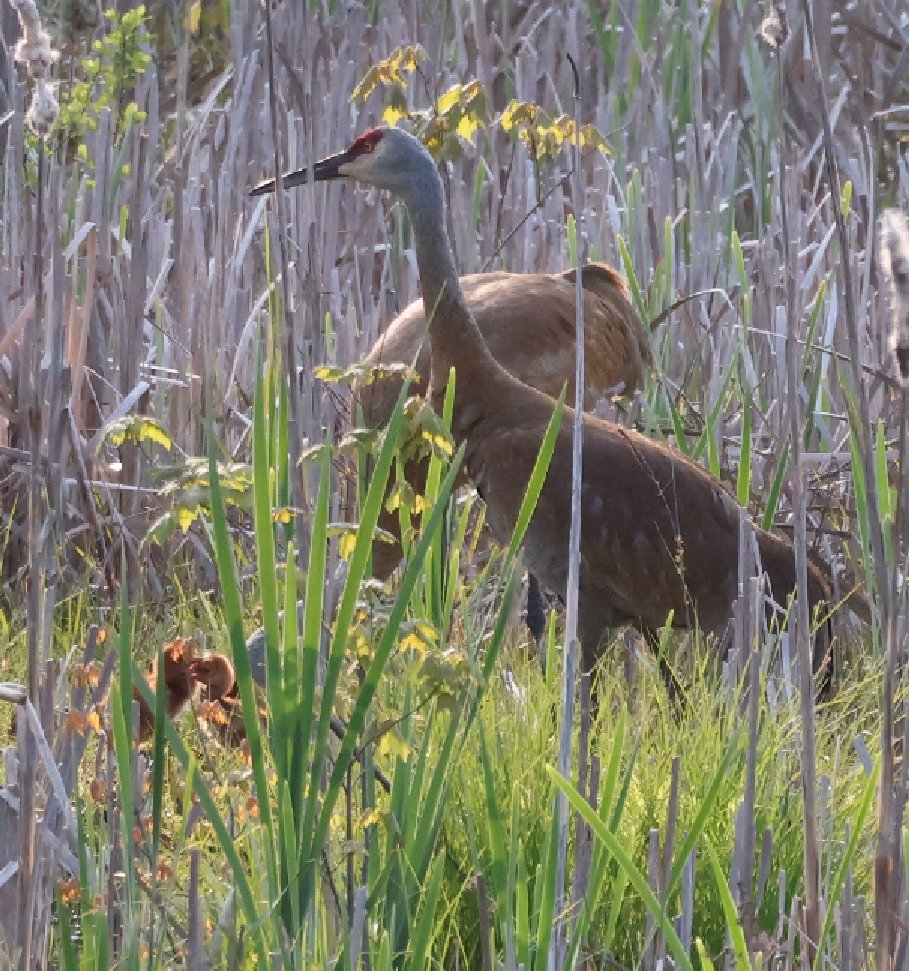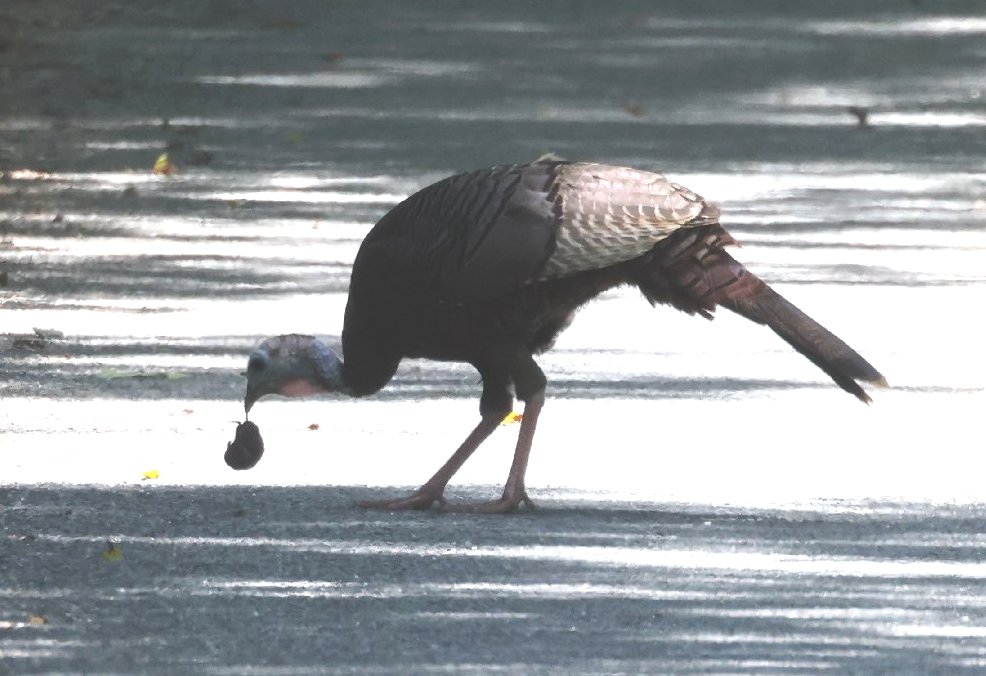Although spring in central Massachusetts started out dry and generated concerns about another possible drought year, rainfall was plentiful and very generous. Amongst all the wet and soggy days were clear and sunny periods that enabled photographers and trailcam enthusiasts to find wildlife species in a wide range of sizes. From tiny moths and pollinators to our largest mammals,
we have our share of creatures great and small.
we have our share of creatures great and small.
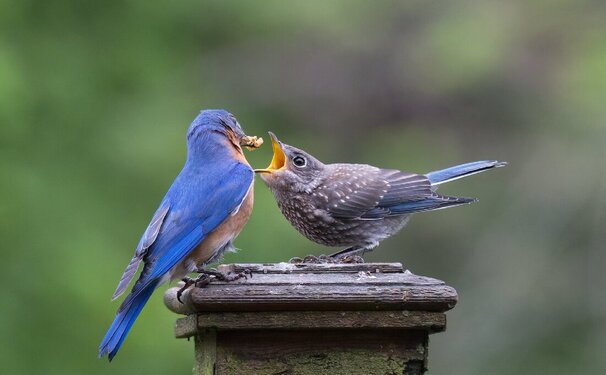
A rather large-looking Eastern Bluebird fledgling is not as small as might be expected. Adult bluebirds weigh .95–1.20 ounces. After a steady diet consisting almost entirely of high-protein insects for 17-21 days (in the nest), then additional time after leaving the nest, the fledglings are well on their way to attaining their adult weight. This fledgling has been out of the nest long enough to appear full-grown although still sporting juvenile feathers. The more downy juvenile feathers contribute to the overall "great" appearance. Photo by Anne Greene .
GREAT

A beaver gathers some food in
Hardwick on May 16th. Beavers are the largest rodents in North America and Eurasia and the second largest rodents worldwide. They weigh from 35 to 66 pounds. The fur-lined lips close behind the incisors, blocking water from the mouth and lungs and allowing beavers to cut, peel, and carry branches underwater. Photo by Alan Rawle.
Maybe not so GREAT in size, but great to see!
|
|
Some bird species are GREATER than others.
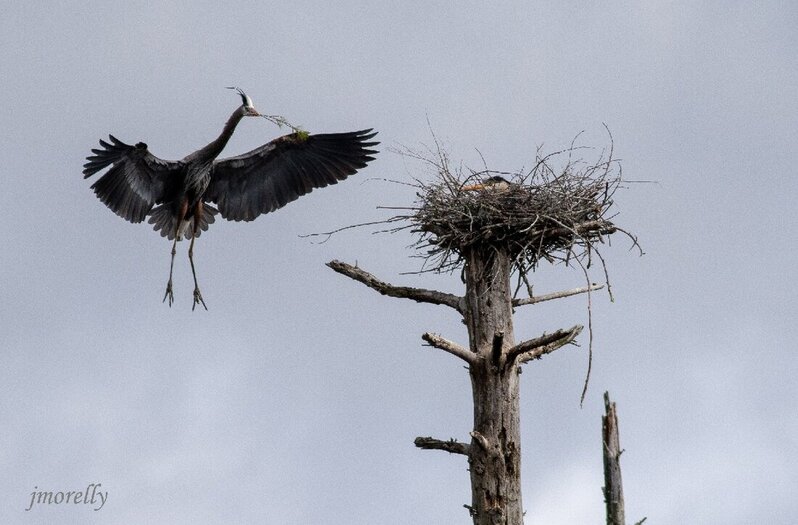
The Great Blue Heron (Ardea herodias) is the largest heron native to North America. Males arrive at colonies first and settle on nests, where they court females; most males choose a different nest each year. The herons build a bulky stick nest. Nests are usually around 20 inches across when first constructed, but can grow to more than 47 inches in width and 35 inches deep with repeated use and additional construction. Photo by Jim Morelly.
As for SMALL birds. . .
Some GREAT insects
Some SMALL insects
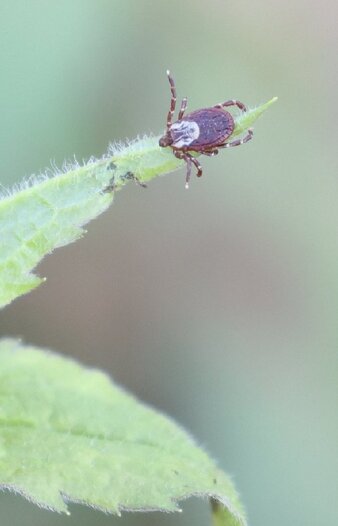
Not an insect, but a small creature of interest, American dog tick or wood tick (Dermacentor variabilis) is a species of tick that is known to carry bacteria responsible for several diseases in humans, including Rocky Mountain spotted fever (rare in Massachusetts) and tularemia (Francisella tularensis) (relatively uncommon in Massachusetts, occurring on Cape Cod and the islands). It is one of the best-known hard ticks. Though D. variabilis may be exposed to Borrelia burgdorferi, the causative agent of Lyme disease, these ticks are not competent vectors for the transmission of this disease. Dog ticks were abundant in some areas of central Massachusetts this season. Photo by Alan Rawle.
|
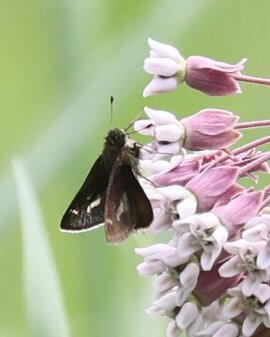
Little Glassywing (Pompeius verna), a member of the butterfly family known as Grass Skippers, is a small creature, with a wingspan of only 1 - 1.5 inches. The larvae feed on Tridens flavus, known as purpletop, tall redtop, or greasy grass, a large, robust perennial bunchgrass native to eastern North America. This adult was found nectaring on common milkweed (Asclepias syriaca) on July 8th. Photo by Alan Rawle.
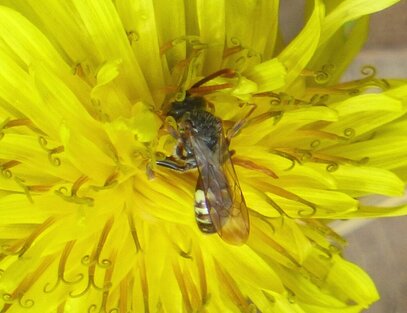
Tiny Syrphid fly on early spring dandelion. Syrphid flies (or flower flies or hover flies, in the family Syrphidae) are common and important natural enemies of aphids and other small, slow-moving insects. The adults resemble bees or wasps, and are often seen visiting flowers, hovering over the flowers and darting around. Photo by Wendy Howes /
|
GREAT and SMALL together
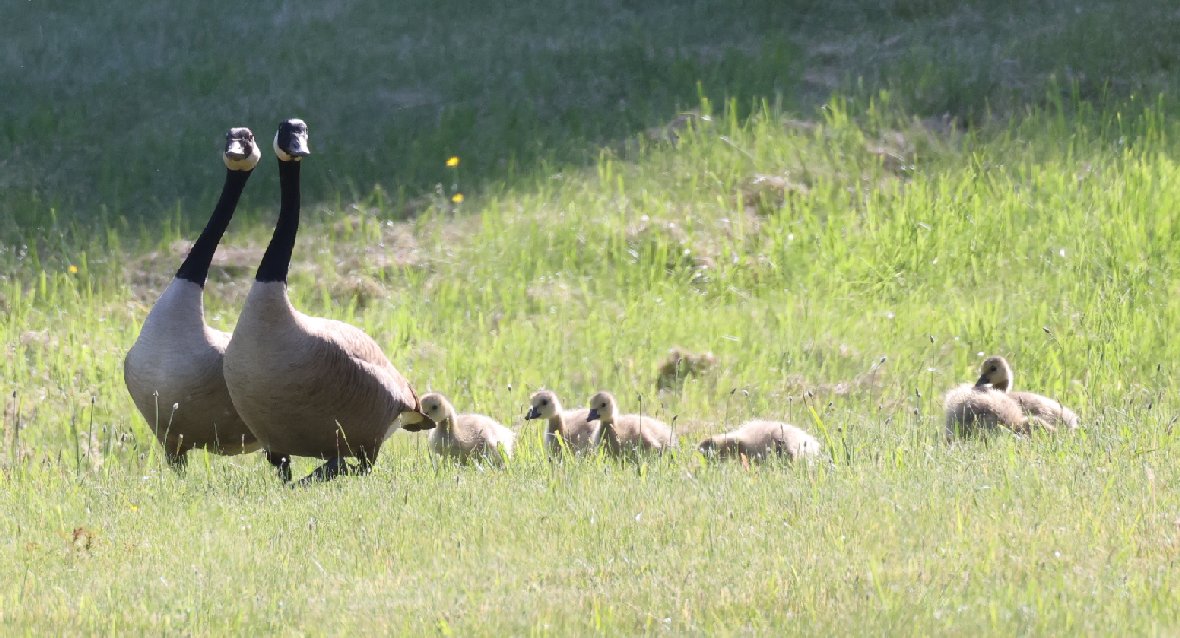
Adult Canada Geese and their goslings illustrate the "great" and "small" stages of this species. An average adult male weighs from 5.7 to 14.3 pounds, while an average female weighs from 5.3 to 12.1 pounds. Larger geese can have an impressive wingspan of up to six feet. As soon as the goslings hatch, and starting off at a weight of only a few ounces, they are immediately capable of walking, swimming, and finding their own food. This family was photographed May 29th in Hardwick by Alan Rawle.
|
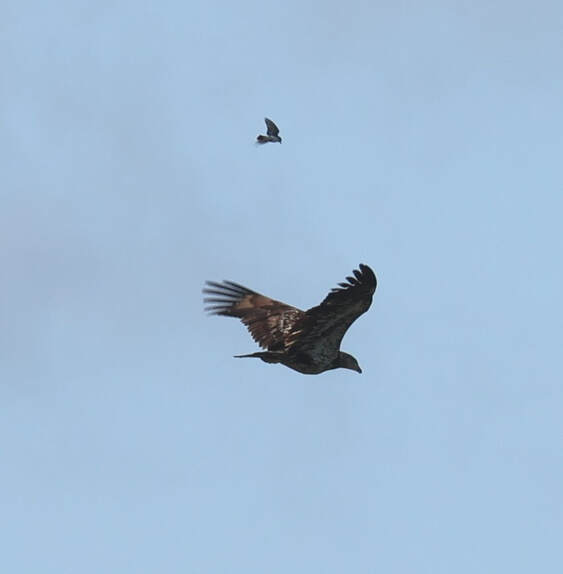
The Eastern Kingbird truly deserves its Latin name of Tyrannus tyrannus. On its breeding grounds, it can often be seen attacking and chasing much larger birds, such as Bald Eagles. This immature Bald Eagle took flight and was chased mercilessly by a kingbird on July 30th near Quabbin Reservoir in Hardwick. Photo by Alan Rawle
